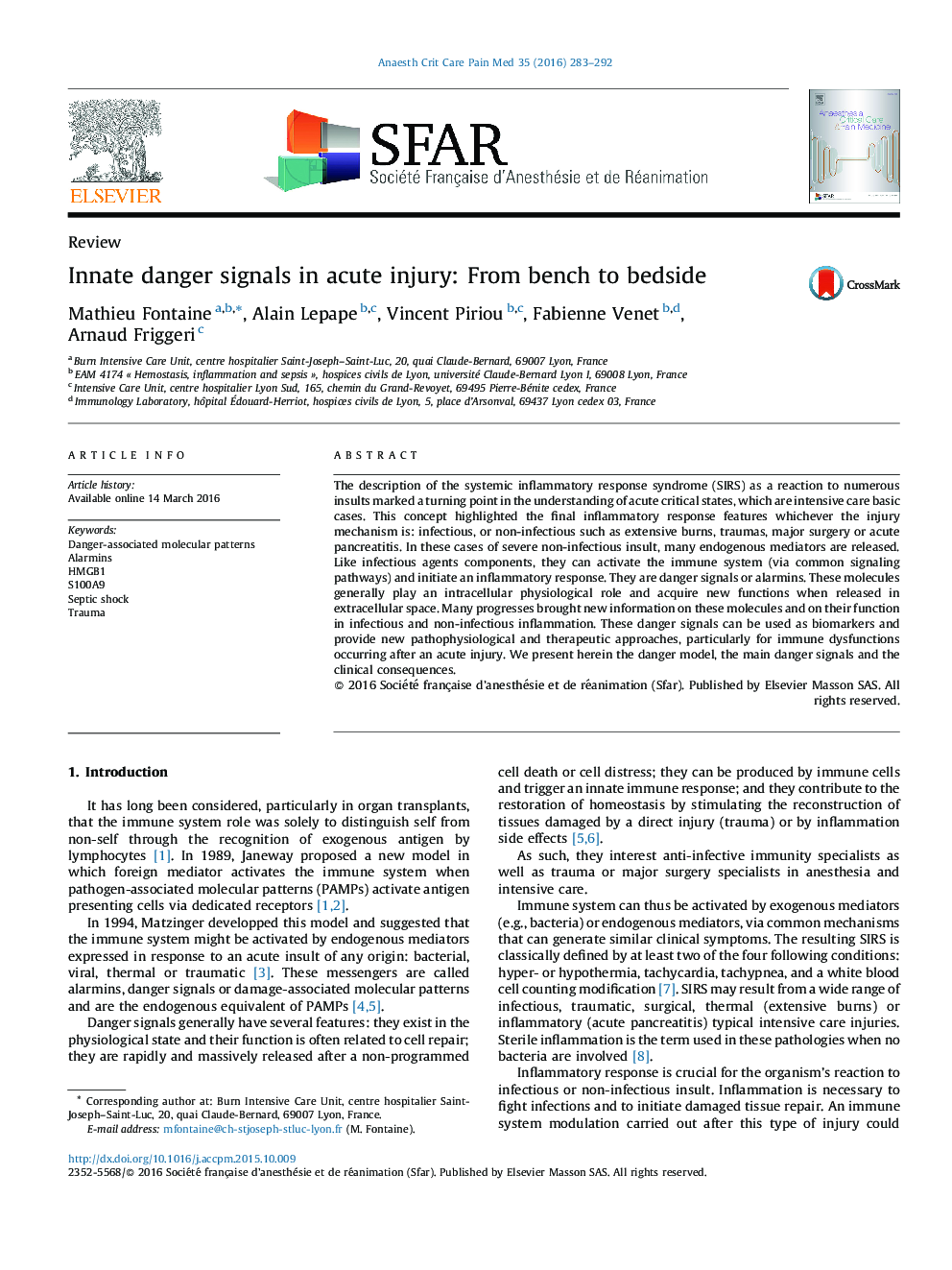| Article ID | Journal | Published Year | Pages | File Type |
|---|---|---|---|---|
| 2741867 | Anaesthesia Critical Care & Pain Medicine | 2016 | 10 Pages |
The description of the systemic inflammatory response syndrome (SIRS) as a reaction to numerous insults marked a turning point in the understanding of acute critical states, which are intensive care basic cases. This concept highlighted the final inflammatory response features whichever the injury mechanism is: infectious, or non-infectious such as extensive burns, traumas, major surgery or acute pancreatitis. In these cases of severe non-infectious insult, many endogenous mediators are released. Like infectious agents components, they can activate the immune system (via common signaling pathways) and initiate an inflammatory response. They are danger signals or alarmins. These molecules generally play an intracellular physiological role and acquire new functions when released in extracellular space. Many progresses brought new information on these molecules and on their function in infectious and non-infectious inflammation. These danger signals can be used as biomarkers and provide new pathophysiological and therapeutic approaches, particularly for immune dysfunctions occurring after an acute injury. We present herein the danger model, the main danger signals and the clinical consequences.
